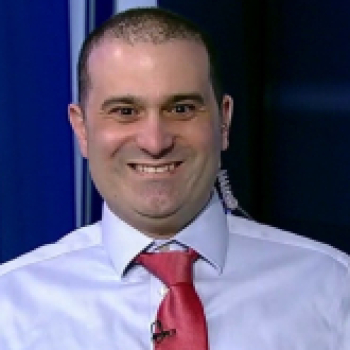
- All Instrument Types
- Indices
- Equities
- ETFs
- Funds
- Commodities
- Currencies
- Crypto
- Bonds
- Certificates
Please try another search

Macro Considerations For The Upcoming Trading Week

Risk-appetites and, by implication, the capital markets entered a new phase around June 5 when the US reported an unexpectedly strong jump in the May nonfarm payrolls. The risk assets had been rallying since mid-March in anticipation of an economic recovery and fueled by the massive liquidity provided by central banks and the spending plans of governments. Subsequent data have generally confirmed that after sharp contractions, many high-income economies are on the mend, and a return to positive growth is likely in Q3.
The corrective/consolidative phase appears to be drawing to a close. The stronger than expected China and eurozone PMIs and another strong gain in US nonfarm payrolls report may provide the fuel new highs for many risk assets. The better data, the liquidity/stimulus story, and optimism over progress toward a vaccine can renew the draw of savings into risk assets. While flare-ups of the virus are taking place in numerous places, the US seems to be struggling more than other high-income countries. Many states have frozen re-opening efforts, and some have backtracked. One report suggested credit card usage fell in the last week of June. At the same time, the US may be the best positioned to provide more support. This could also weigh on the dollar and encourage its use to fund the purchase of other assets.
Congress extended the Payroll Protection Program into early August, and it is working on a new fiscal bill that is likely to be worth at least 5% of GDP ($1 trillion). The Federal Reserve seems to recognize that it can do more, as well. Many of the facilities the Fed has launched are not being used very much. Part of the reason is that the central bank succeeded in helping stabilize the capital markets. Dollar swaps with foreign central banks and large repo operations are simply not needed. The same appears to be true of its money market, commercial paper, primary dealer support. Other facilities, like Main Street, appear not to be sufficiently enticing. The primary and secondary market purchases of corporate bonds have begun, but the Fed is going relatively slowly. The same is true of its support for local and municipal bonds.
Redeployment of resources, tweaking the programs to make them more attractive/accessible, and new initiatives are likely, even if not immediately. The Fed's balance sheet shrank in June, the pace of M2 growth slowed, and the average effective fed funds rate ticked up. It is unlikely to accept this combination for long, given its economic assessment and outlook. The FOMC meets late July and then mid-September. The minutes from the recent meeting showed that officials want to give more guidance on the outlook for rates and asset purchases.
Yield curve control, or that the Fed is calling yield curve targeting, which entails the purchases of sufficient notes or bonds to achieve and maintain a predetermined interest rate, remains a distinct possibility later this year. Instead of announcing a fixed amount of bonds it would buy regardless of price, the central bank would set the price (yield) and buy an unspecified quantity to ensure its target is met. A small majority of economists in a Bloomberg poll a month ago anticipate the such a policy will be eventually adopted. Fed officials seem reluctant to take such measures under current conditions. The bar may be higher than previously signaled but
The economic calendar suggests a slow start to the second half. The June non-manufacturing ISM and PMI are on tap, but the employment data steals its (potential) thunder. June nonfarm payrolls jumped by 4.8 mln after a revised 2.7 mln (initially estimated near 2.57 mln) gain in May, well more than expected. It appears that around a third of those who lost jobs returned (~7.5 mln of 22 mln). The unemployment rate fell to 11.1% from 13.3%. This was a larger drop than expected, but there continue to be definitional problems that may be exaggerating the improvement. Moreover, the surveys were conducted prior to the recent flare-up and reintroduction of restrictions in several states. Meanwhile, weekly initial claims are slowing, but 1) over a million new filings a week is disheartening, and 2) they are not receding as fast as anticipated.
Globally, measures of producer prices are subdued, and the US and China are no exceptions. The weakness of producer prices is understood to broadly signal weak demand from industry. China's producer prices are expected to have stabilized in June after falling for the past four months. In May, producer prices had dropped 3.7% from a year ago. Recall that China was already experiencing outright deflation in producer prices throughout H2 19. At the extreme last October, producer prices were down 1.6% year-over-year. Last week, the eurozone reported producer prices tumbled 5% from a year ago in May after a 4.5% drop in April. China reports CPI as well. It appears to be stabilizing after dropping from 5.4% in January to 2.4% in May.
In the US, producer prices rose 1.4% in 2019 after a 2.6% rise in 2018. With the collapse in the price of oil and the dollar's strength, producer prices were 1.2% lower in April than a year ago. They were still down 0.8% in May but likely jumped back in June. Crude oil (August WTI) rose over 10%. Commodities more broadly (CRB) rose about 4.25%. The base effect also is favorable.
While not typically a market-mover, the consumer credit report may get a closer read than usual. Retail sales jumped twice as much as the economists expected in May (17.7% vs. median survey forecast of 8.4%). Did they not expand credit usage in May after a $68.8 bln slump in April? Economists expected another decline of around $17.5 bln. The almost $80 bln collapse in March and April offset the prior six-month gains.
Europe may surprise with a strong bounce in May retail sales that are the data highlight for the eurozone next week. Retail sales sank 11.1% in March and another 11.7% in April. However, the May data from Germany and France were particularly strong. French consumer spending spiked 36.6% in May (month-over-month) after falling a revised 19.1% (initially -20.2%) in April. German retail sales leaped 13.9%. The median forecast, according to Bloomberg, was 3.5%. In April, retail sales in Germany tumbled 6.5% (initially report -5.3%). Recall that eurozone retail sales were soft in H2 19, falling in four of the six months, including a 1% decline in December. That was the largest decline in a couple of years.
The Reserve Bank of Australia begins the new month with a central bank meeting. The Australian economy was still struggling in May but appears to have turned a corner in June. The composite PMI jumped to 52.6 in June from 28.1 in May. Recall that it finished last year below the 50 boom/bust level at 49.6. With imports falling faster than exports, Australia's monthly trade surplus has averaged nearly A$7 bln in the first five months of 2020 compared with an average of a little less than A$5.1 bln comparable 2019 period. The central bank has had opportunities to talk the Aussie lower as it appreciated by about 12.6% in Q2 against the US dollar, the most of the major currencies. We see no compelling need for the RBA to alter or drop its 2-3% inflation target that it has consistently under-shot, nor extend its yield-curve control beyond the three-year bond. With a brief exception in early June, Australia's 10-year yield, for example, has been in a 10 bp band on either side of 90 bp.
There are three other political events to note next week. First, Mexico's President AMLO will visit the US ostensibly to celebrate the implementation of the new USMCA free-trade agreement. The largest benefit may be that it lifts the uncertainty spurred by repeated threats of the US to pull out of the continental agreement. The modernization of NAFTA was previously going to happen through the Trans-Pacific Partnership until the US withdrew a couple of years ago. Ironically, both presidents are at a low ebb of their public support. A major difference is that AMLO, like all Mexican presidents, serves one six-year term, while Trump faces the voters in four months.
Second, the Eurogroup of EMU finance ministers will decide on a new head. Domestic political machinations in Portgual saw Finance Minister and Eurogroup President Centeno shuffle portfolios and return to the central bank as Governor. There are three candidates for the 2.5-year term: Calvino for Spain, Donohoe from Ireland, and Gramegna from Luxembourg. A simple majority (10) is needed for victory, and we suspect it will stay in Iberia with Calvino.
Third, European Council President Michel is expected to unveil a compromise proposal for the EU budget and the European Recovery Fund. The European Commission had proposed a 750 bln euro facility of 2/3 grants and 1/3 loans as part of the EU's seven-year budget. The heads of state (European Council) could no reach an agreement last month and will try again at a summit on July 17-18. The compromise reportedly may keep the EC's proposal for 70% of the fund (~525 bln euros) and hold off the distribution of the remainder until 2023, and then distributed depending on the depth of the recession.
Michel may offer more rebates to creditor countries, and add some conditionality to keep the spending in line with Europe's strategic goals. These include climate change and the digital transformation and could also be used to help incentivize some countries, like Hungary and Poland, to avoid or minimize confrontations with the EU. Reports also indicated that Michel could propose a reduction in the EU budget in the later years, which would likely appeal to some creditor countries. There does seem to be a big push to reach an agreement, and Michel, no doubt, is crafting a proposal that could secure a majority. Still, since the decision must be unanimous, it boosts the incentive to be a "holdout" to win extra concessions.
Again, it is remarkable that the common bond which received so much attention in the media is among the least controversial elements now. It is not the coup de grace that once and for all settles the issue of fiscal union. It could be scaffolding for a new, more integrated Europe, or it could be dismantled after the emergency passes.
Related Articles

A fresh batch of important monthly data on income, outlays, and personal consumption expenditure prices in the US has been published. Personal outlays grew by 0.2% in April after...

The New Zealand dollar continues its ascent for the second consecutive session against the US dollar, resulting in the NZD/USD pair climbing to 0.6125. This increase is attributed...

Dollar pulls back ahead of core PCE price index Euro awaits Eurozone flash CPI data Wall Street closes in the red, oil extends slide Core PCE inflation enters the spotlightThe...
Are you sure you want to block %USER_NAME%?
By doing so, you and %USER_NAME% will not be able to see any of each other's Investing.com's posts.
%USER_NAME% was successfully added to your Block List
Since you’ve just unblocked this person, you must wait 48 hours before renewing the block.
I feel that this comment is:
Thank You!
Your report has been sent to our moderators for review





Add a Comment
We encourage you to use comments to engage with other users, share your perspective and ask questions of authors and each other. However, in order to maintain the high level of discourse we’ve all come to value and expect, please keep the following criteria in mind:
Enrich the conversation, don’t trash it.
Stay focused and on track. Only post material that’s relevant to the topic being discussed.
Be respectful. Even negative opinions can be framed positively and diplomatically. Avoid profanity, slander or personal attacks directed at an author or another user. Racism, sexism and other forms of discrimination will not be tolerated.
Perpetrators of spam or abuse will be deleted from the site and prohibited from future registration at Investing.com’s discretion.